Making Monkey Tails in C&Sn3
|
This post was updated on .
 As promised, here is my dissertation on S scale "Monkey Tails". Prototype: As used on the C&S narrow gauge cabooses and coaches, the monkey tail was merely a flexible extension of the main train line of the automatic air brake system. It attached to the air hose at the very end of the train with a standard glad hand. The hose varied in length and was attached to a distal pipe, also of variable length, with a union. The pipe had a shepherds hook at the end. On the pipe, proximal to the crook, was a cutoff valve with a relative long handle. 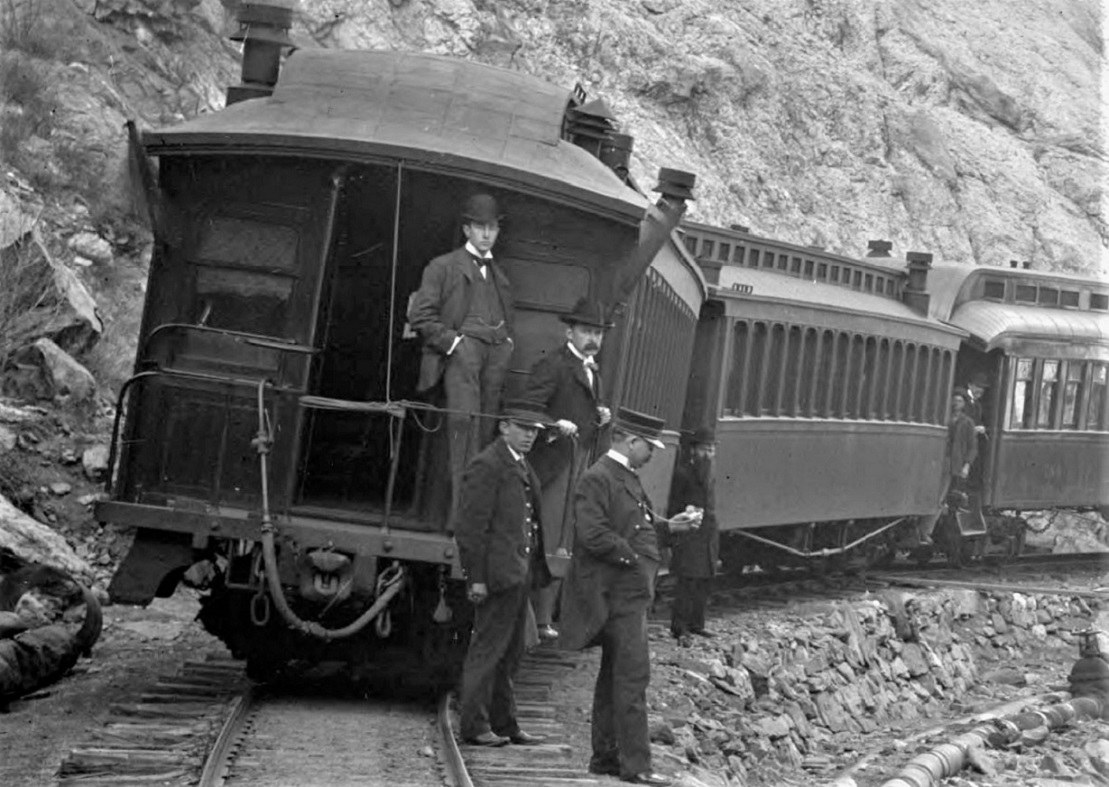 Chris Walker refers to this cutoff valve as a "tap", in NZ railway parlance. In the US, I've always heard them described as "cocks". In medicine we use them with IV tubing and call them "stop cocks". On US railway cars, the train line pipe ends at each end of the car with "angle cocks", as the cock is integral to a piece of angled plumbing. The usual convention of angle cocks is that the handle of the cock is parallel to the direction of flow of the compressed air. On C&S monkey tails, the opposite appears true. When parallel to the pipe, the cock is closed. So, these cutoff cocks on the monkey tails should be considered to be a distinct variant, "monkey cocks" perhaps. But I digress. S scale Monkey Tails: When I began building Sn3 models back in 1985, Swede Norlin's Tomalco was a prime supplier of S scale rolling stock kits and parts. Swede offered a part P 5012, "air hose and fitting set". I bough a good sized stash, haven't used them in years. This is what is in the Tomalco set: 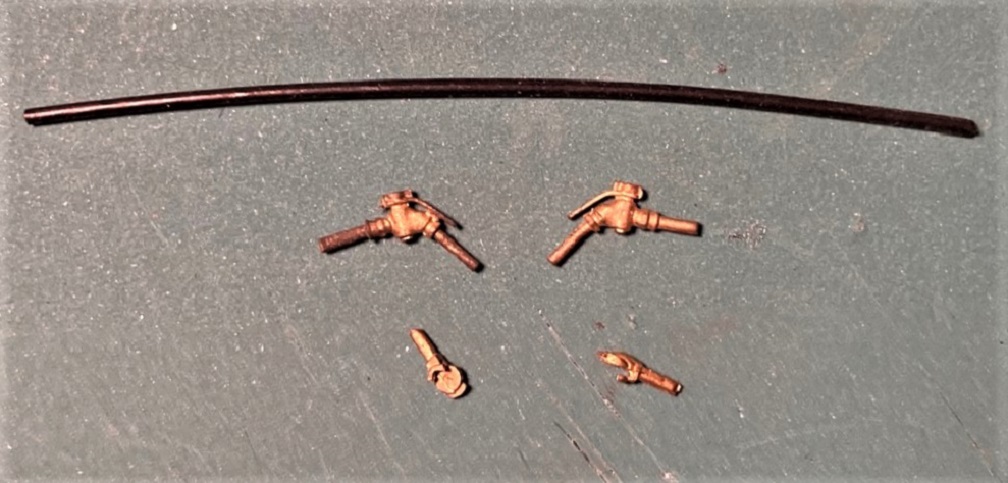 Beautiful brass castings for two angle cocks, two glad hands and a length of black insulation from single strand wire for hoses. The insulation is about 0.035" OD. To build up the monkey tail, I filed the mating surfaces of the two glad hands smooth, and removed the little flange at the end. I then put a little dab of Carr's soldering paste on one glad hand mating surface, and positioned the other to mate at a slight angle, holding the two together with tweezers. A touch of a hot soldering iron and in a few seconds I had a coupled set of glad hands. I cut the black insulation into two pieces, one 18 scale inches for the caboose or coach air hose, the other 48 scale inches for the monkey tail. A length of 0.020 brass wire was shaped into the shepherds hook pipe with my looping pliers. My original monkey tail from 1990 used Tomalco cut off valve and union castings--I couldn't find my stash of these little guys, so I cobbled a monkey cock together from a PBL branch train line cutoff and a piece of 0.010 Plastruct rod for the handle. I did find some PBL cored brass unions in my parts box. Before final assembly, these are the parts: 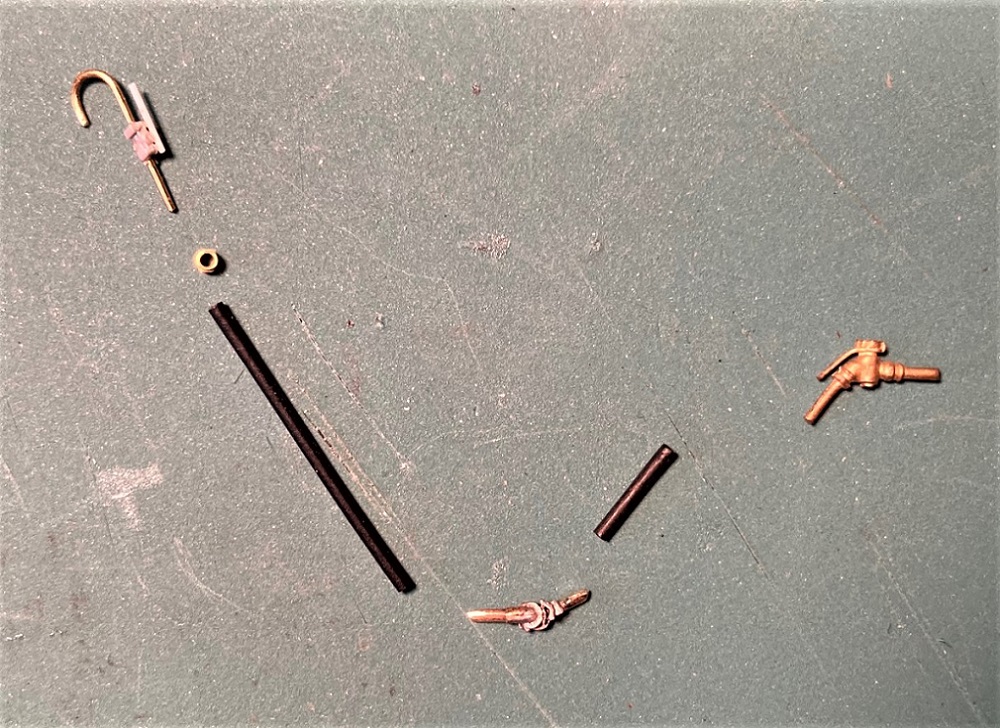 Final assembly required hooking thing together, like the prototype. You'll probably need to dilate the ends of the black insulation with a tweezer prong, and file the Tomalco stems to remove any burrs, and round the cut edges of the ends. With everything together the monkey tail looks like this:   I painted the coupled glad hands "rust", and the shepherd's hook pipe and fittings "steel" with a small brush. I reinforced the joints of the air hoses to brass fittings with ACC. DON'T glue the air hose to the angle cock though. You will want to solder or glue this guy to the end of your brass caboose or coach. After painting, clean the stem of the angle cock with lacquer thinner, push on the air hose, and reinforce the joint with ACC as your very last act of construction. Then, hang the shepherd's hook over a ladder rung or end railing and voila, a monkey tail in C&Sn3. Once I had located all the parts, I made this one in about 45 minutes. Parts Availability: After Swede Norlin passed away, Tomalco was eventually acquired by Trout Creek Engineering. Evidently they still offer Swede's part number P 5012 at 4 for $8.30: http://www.troutcreekeng.co/category/sn3/ Scroll to the bottom of the page to find the listing and illustrations. I can't find the beautiful Tomalco cut off valve casting for sale anywhere. The Tomalco collection of locomotive brass casting was acquired by Paul Vaughn at PVC. He does list the Tomalco Unions: https://pvc-sn3.com/rapidcart-8/ Variations: Chris pointed out that in the 1930s, C&S cabooses had monkey tails with two taps or cocks. I think the lower "tap" is, in fact, the fitting for the peanut whistles on the proximal pipe: 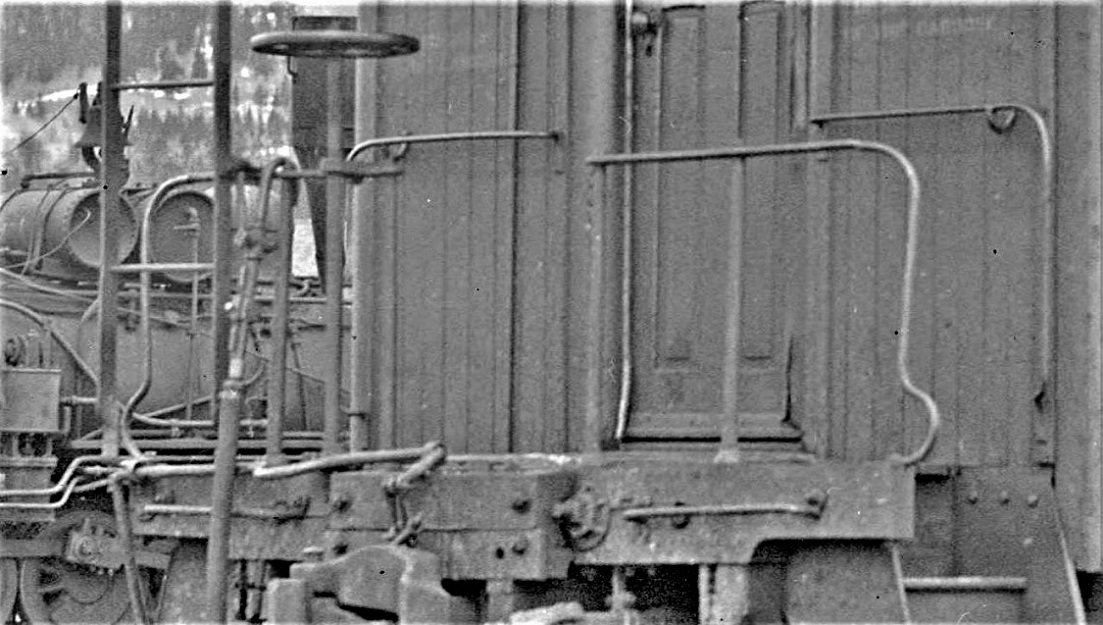 Note the bright button on the little box-like fitting? Are the two rounded protrusions, above and below the box fitting, both peanut whistles? About the right size. Anyways, that's my method of making C&S monkey tails. Note that no monkeys were harmed in the production of this post. 
Jim Courtney
Poulsbo, WA |
Re: Making Monkey Tails in C&Sn3
|
Todays Monkey Tail temporarily installed on C&S coach 74:
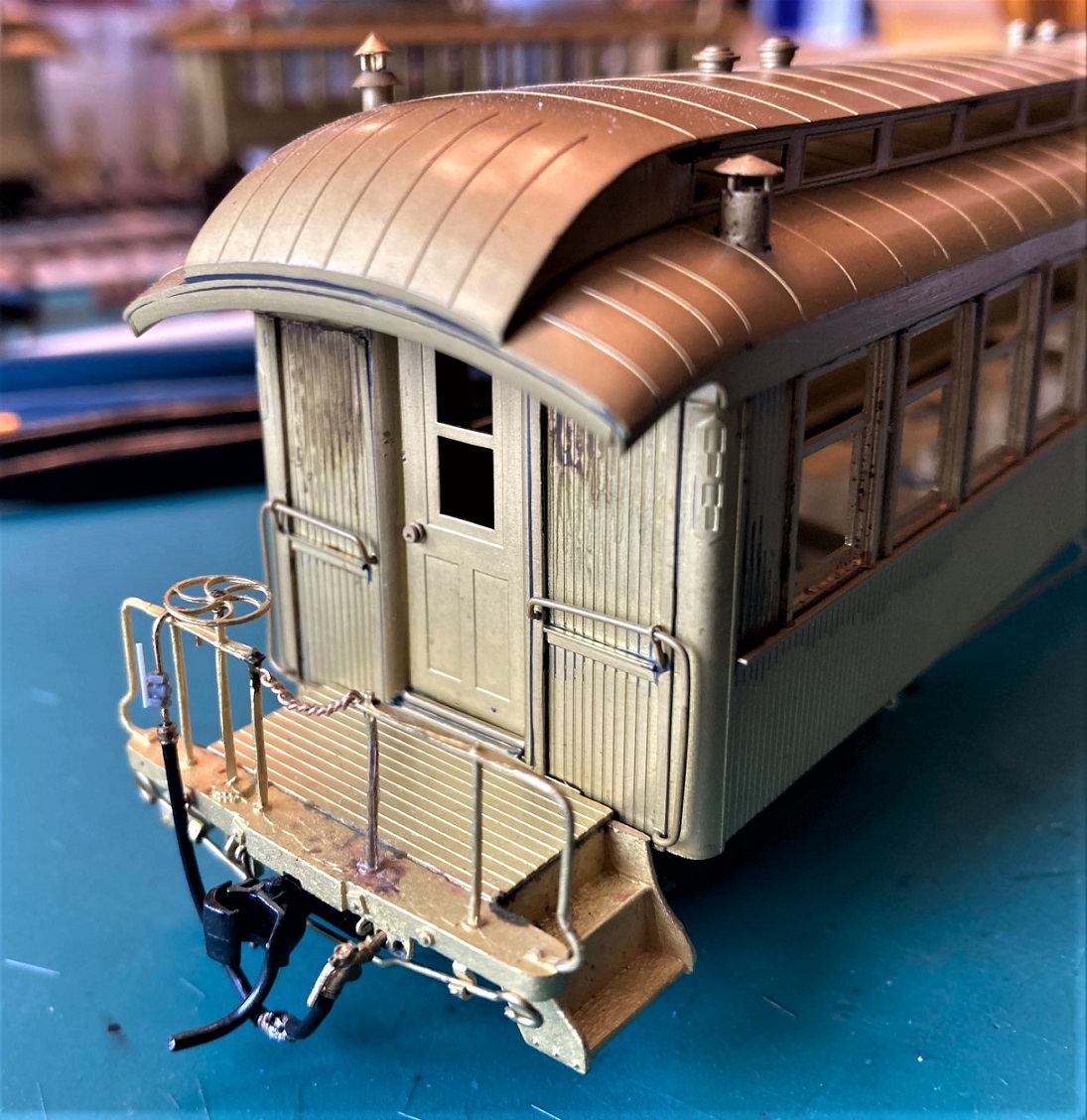
Jim Courtney
Poulsbo, WA |
Re: Making Monkey Tails in C&Sn3
|
In reply to this post by Jim Courtney
Awesome! Thanks for posting this as it is a much needed detail part for my Sn3 C&S Cabeese.
Jeff
|
Re: Making Monkey Tails in C&Sn3
|
This post was updated on .
In reply to this post by Jim Courtney
Jim, I had a brain surge in the recall dept. See http://c-sng-discussion-forum.254.s1.nabble.com/C-S-Passenger-Trucks-5-6-Wheelbase-tp18644p18769.html for a clarification: Apparently our older versions were the same as the C&S fittings, and why I forgot those I have no explanation, sorry.  NZR Tap "up", closed position with Airhose hooked back on dummy-coupling. 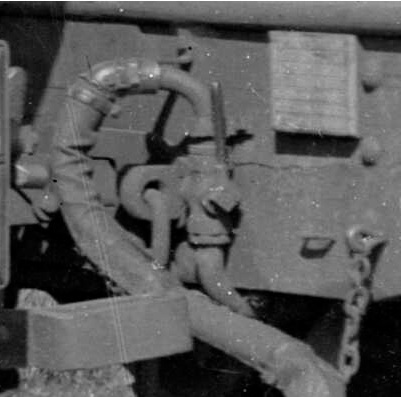 Edit: Jim's reference to "cock" made me go find my old Rules&Regs Book. While it was common to refer to the Bogie-Isolating Cocks(Locomotives) and the Airbrake Cut-Out Cock(Car&Wagon) or any other isolating feature at work; the slang was always "put the Taps up"(or "Pull the Tap" on occasion if warranted by the Guard in the Van at the end), when talking about coupling up/separating vehicles. The Rulebook I see calls them out as Coupling Cock(s). I have mislaid my Airbrake exam papers, so can't see what I referenced them as "officially". Too many years have gone by.  And even though we had the modern angled Tap-handle, I doubt anyone ever called them angle-cocks here, unless they were a quietly a US railfan. And even though we had the modern angled Tap-handle, I doubt anyone ever called them angle-cocks here, unless they were a quietly a US railfan.
UpSideDownC
in New Zealand |
|
Administrator
|
In reply to this post by Jim Courtney
Thanks, Jim. I believe the primary function of these devices on the C&S was to provide for the use of the peanut whistles to signal as the train was backing. As an example, Passenger trains were required to either back from Dickey to Dillon or back from Dillon to Dickey as the wye at Dillon could not turn the train. Operations to and from Blackhawk were similar. The second function, of course, would be to dump the air in case of emergency.
We have discussed previously the use of a second air hose on passenger equipment including the B-3-C locomotives. The most likely purpose of that second line was as a signal line for the signal device on the "monkey tails". On the Caboose, it was obviously connected to the trainline. But it's function was still the same. All switching on the Keystone and Blackhawk branches required backing in one direction or the other and there must have been other locations as well, including at Como. The Rule Book probably mentions the use of these things. I have managed to procrastinate on adding these devices but with this great example you have provided on their construction I must follow suit. Beginning with Coach #76. So, thanks for that. No excuses any more not to. |
Re: Making Monkey Tails in C&Sn3
|
Mike,
were these devices ever used to "whistle-in" the Flagman, or was that solely the duty of the Engineer? I can't see any use of these things during switching at Idaho, or Black Hawk unless the Cab was heading up the setting back move? Jim, it would be very rude of me not to say.... nice work on that plumbing mate!
UpSideDownC
in New Zealand |
|
Administrator
|
This post was updated on .
In reply to this post by Jim Courtney
I spent a while digging through old parts that I have around. I used a piece of telephone wire, stripped off the insulation on one end. I added a Grandt Line coupling and a San Juan cutoff valve with a small round piece for the peanut whistle to the bare wire and fashioned the hook. On the other end, I acc'd a San Juan rubber glad hand. Painted it with Rustoleum Camoflauge "Deep Forest Green" and acc'd the glad hand to one of the two hoses on the rear of Coach #76. Sorry, my internet connection isn't strong enough at this time to upload larger photos. For what it's worth, I always heard these referred to as pigtails. Thanks, Jim, for the inspiration. I don't know if I can scrounge up enough leftover parts and pieces for four cabooses.....
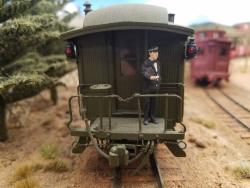
|
|
Administrator
|
In reply to this post by Chris Walker
Sure, Chris. Why not? Signals are signals, right?
|
|
In reply to this post by Chris Walker
Chris, wouldn't it be the responsibility for the engineer to whistle in the crew as they are the ones who can start to move the train? I figured these were used at grade crossings during reverse moves. And perhaps for the rear end crew to acknowledge front end whistle signals? Could the front end hear the peanut whistle, or would the cab find the drop in air pressure a more dependable form of communication?
Keith Hayes
Leadville in Sn3 |
Re: Making Monkey Tails in C&Sn3
Indeed it may be, Keith. It was for us to do so, but we didn't have Brakemen, just Driver, Fireman and Guard(or Shunter if a local Shunting service). Our Whistle signal was only to call in the member protecting the rear of the train. I just don't know if it may have been used in forward protection? I wondered about that, but where? and what moves? Black Hawk; middle switchback to Central: just how many crossings were on that stretch? Maybe at Chase Street and Bobtail Street which are the only two I know of. DPL X-2022 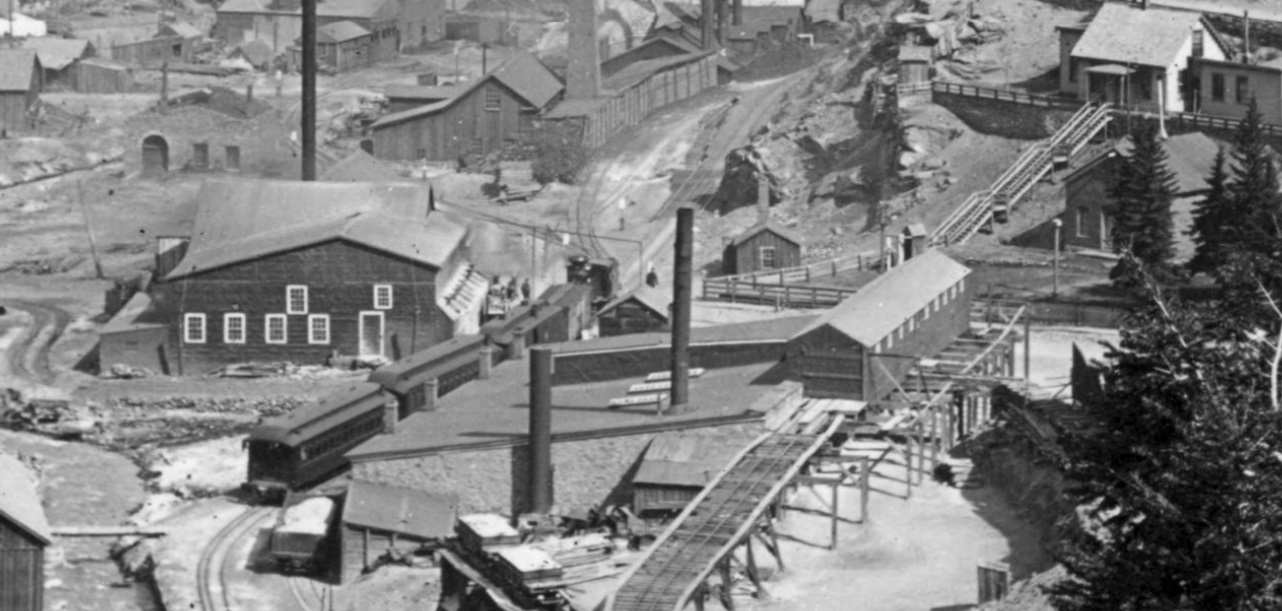
With a short train maybe i.e. single Engine load on a 4% but not on an Air-Brake limit downgrade Drag. Yes that will do it but how much the air-pressure was reduced by the peanut whistle I don't know. In our case the Guard would have just blipped the Tap and only at a spot that it was known it would happen. It was possible in a quiet(Diesel) cab to hear the phiss of a Tap being closed, but only if it was the modern self-bleeding type and the opposite side of the coupling(away from the Loco) being closed first.
UpSideDownC
in New Zealand |
|
Administrator
|
Don't forget Como, where the wye was North of the Depot. The Passenger train would have to back in or back out. Not a long distance, but still necessary. And Denver, where the train was turned.
|
«
Return to C&Sng Discussion Forum
|
1 view|%1 views
| Free forum by Nabble | Edit this page |

